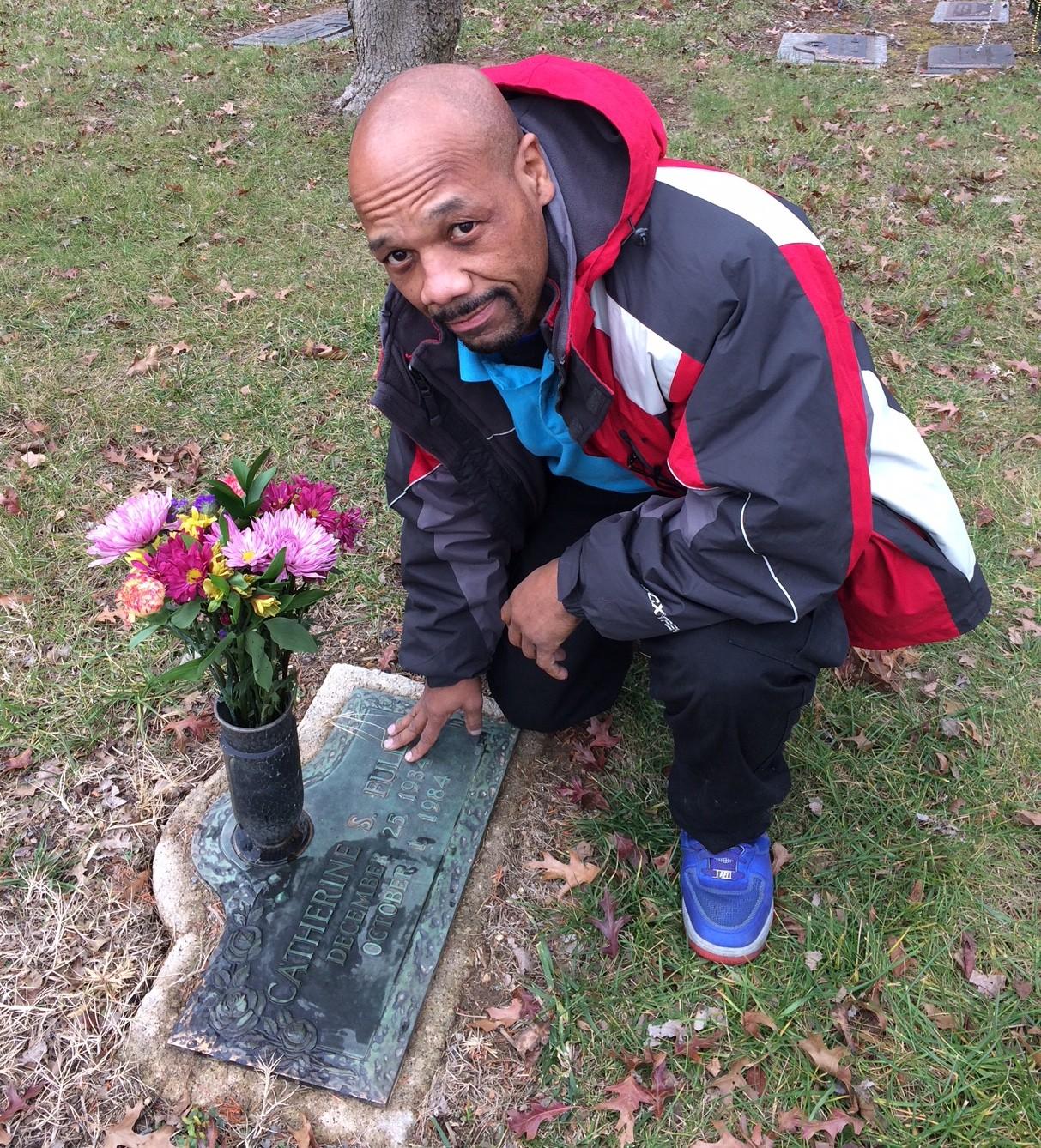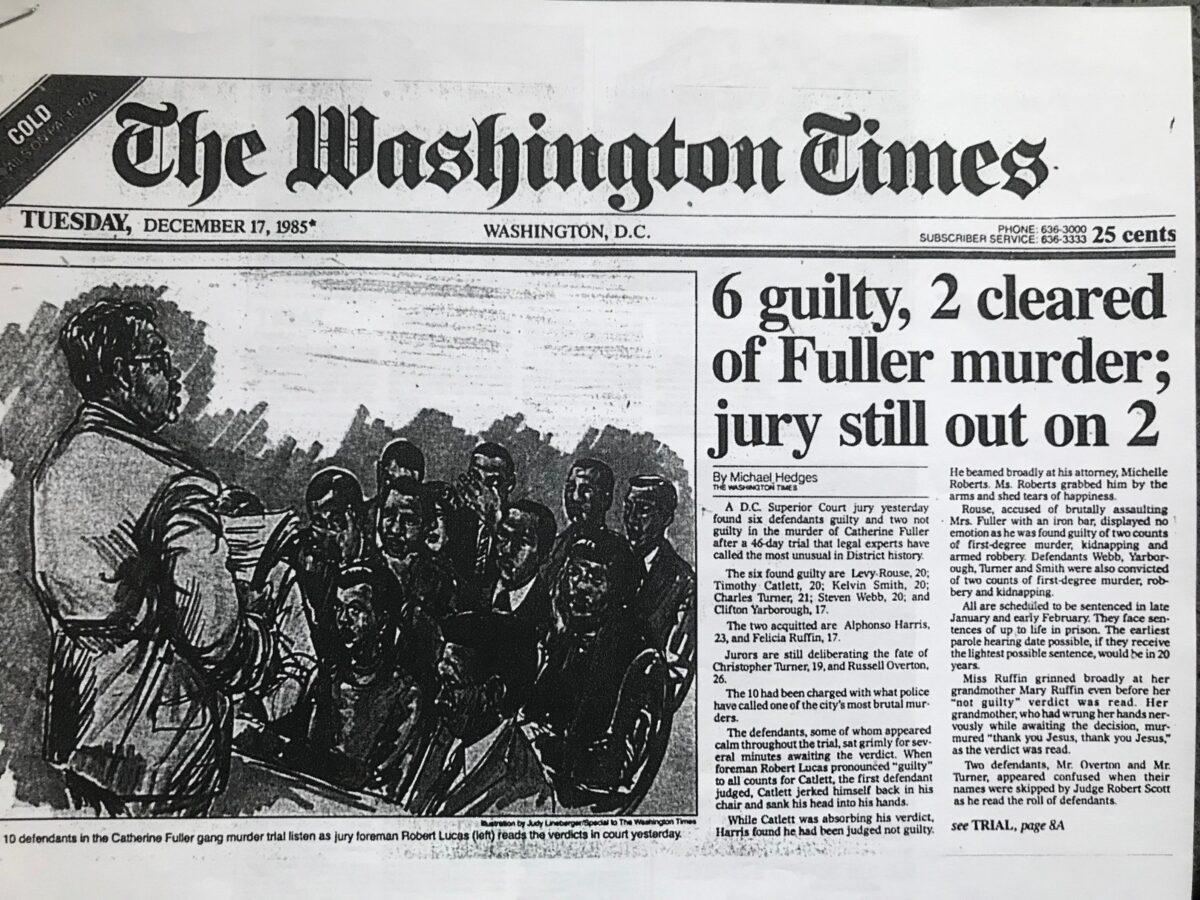Why Prosecutors Keep Cheating: The Catherine Fuller Murder and the Failure of the Brady Rule
Since last fall, #MeToo has grown from a hashtag into a movement. Stories of sexual misconduct throughout society — especially in the entertainment and business and political spheres — have wakened millions of people to the colossal scale of the problem. One of the most hopeful results is that efforts are underway to go beyond simply naming the problem […]

Since last fall, #MeToo has grown from a hashtag into a movement. Stories of sexual misconduct throughout society — especially in the entertainment and business and political spheres — have wakened millions of people to the colossal scale of the problem. One of the most hopeful results is that efforts are underway to go beyond simply naming the problem to recognizing the culture that has allowed or excused sexual harassment and assault, and to hold organizations accountable for changing that climate.
Something similar needs to happen with our justice system. Over the past year, newspapers and magazines and legal blogs have been full of stories about violations of the Brady rule: the legal tenet that prosecutors in criminal cases must disclose favorable, material evidence to the defense. But so far, nearly all the focus has been on the misdeeds of individual prosecutors, and the failure of the courts to hold them accountable. There has been has been little effort to link these actions to the culture of prosecution offices; to a working environment that has tacitly, if not overtly, approved and enabled those violations.
The 33-year odyssey of the Catherine Fuller murder case, which reached the Supreme Court last year, is a prime illustration of why prosecutors break the rule. It’s also a lesson on why the problem persists.
In October 1984, a woman named Aimee Davis told Washington, D.C. police Lt. Frank Loney that she’d seen a horrific murder. She was shooting up heroin in an alley off H Street NE when she saw a man she knew, James Blue, beat a woman to death.
“The motherfucker just got out of jail the same day,” she said, “and killed her for just a few dollars.”
Loney knew of the killing Davis was talking about. Less than four weeks earlier, Catherine Fuller, a 49-year-old wife and mother, had been found dead in an empty garage. Police had quickly called it a gang attack; perhaps the most vicious and senseless killing in city history. They were working overtime to crack the case.
Loney passed his report of Davis’s story to the homicide division. But somehow it got “lost in the shuffle,” as the government later put it. By the time Loney’s report reached the right detectives, they had arrested 17 other people for the crime. The story was front-page news, and the lead prosecutor, Jerry Goren, was preparing for the trial of his career.
Under the Brady rule, named for a 1963 Supreme Court case, Davis’s story was clearly exculpatory. It was an eyewitness statement naming a different perpetrator, with a completely different scenario. But her narrative didn’t fit with Goren’s case. He decided, on his own, that she wasn’t credible. Instead of giving the report to the defense, he buried it. Eight young men were convicted for the killing, despite their protestations of innocence, and sent to prison for life.
Fifteen years later, the work of a dogged Washington Post reporter led to the discovery of this hidden evidence, along with other information favorable to the defense. It took 10 more years to win a hearing. Finally, the case — U.S. v. Turner — went all the way to the Supreme Court.
In June 2017, the Court, by a 6–2 vote, denied the men any relief. The majority opinion, by Justice Stephen Breyer, echoed both lower courts in stating that withholding Davis’s story was wrong; that exculpatory information should “be disclosed to defendants as a matter of course.” But he deemed the withheld evidence “too little, too weak, or too distant from the main evidentiary points” to have unfairly prejudiced the accused, so the convictions stood.
The Fuller case isn’t unusual; prosecutors regularly withhold exculpatory information. Alex Kozinski, former chief judge of the 9th Circuit, the nation’s largest appeals court, described the situation this way: “There is an epidemic of Brady violations abroad in the land. Only judges can put a stop to it.”
Kozinski, who recently resigned because of extensive sexual misbehavior, is right about the problem, but only partly right about the cure. Judges should — yet seldom do — punish violations that get to court. Stronger enforcement would no doubt scare some erring prosecutors straight. But because most Brady misdeeds don’t attract a relentless reporter or lawyer, they never come to light. Only prosecutors can stop them, since only they are aware of them.
So why is there virtual silence from prosecuting attorneys about this problem? Why do so many of them routinely break the rule? Or defend their colleagues who do?
It’s not due to some ambiguity in the guiding principle. The law is clear: the government’s “interest in a prosecution is not that it shall win a case, but that justice shall be done.” It’s because, in practice, convictions have become the goal. Prosecutors are not praised and promoted for making Brady disclosures, but for getting guilty verdicts. That’s their mindset.
In this case, it would have been a simple matter for Goren to hand Davis’s statement to the defense. Yet he hid the information to protect his prosecution. To him, the accused were guilty of a terrible crime, and justice meant convicting them of Fuller’s murder. But he didn’t have a strong case. If Davis was right, his entire prosecution was wrong. He didn’t want to lose the biggest trial of his life. So he withheld the report.

As a former public defender in Philadelphia and D.C., I know lots of conscientious prosecutors. But too many others do whatever they can to subvert the Brady rule. Sometimes they make late disclosures, even during trial, so it’s difficult to incorporate any new, helpful information into a defense. Sometimes they resort to massive document dumps, which makes it hard to find a useful piece of evidence among hundreds of pages. And sometimes, as Goren did here, they simply hide Brady material.
In 2009, I represented Joseph Harrington, who was accused of stabbing a man to death in a D.C. park. After deliberating several days, and announcing once that they were hung, the jury convicted him of murder. Less than two weeks later, mostly through blind luck, I learned that the prosecutor had concealed the fact that her star witness had been seen at the crime scene holding a large knife. And when an officer asked the witness about it, she had replied: “Self-preservation is the first rule of law.”
After extended arguments, the trial judge ruled that the non-disclosure was done “consciously, deliberately, and as a tactic,” and reversed the conviction. But it left me wondering how many other cases I might have worked where favorable evidence remained hidden, and my clients suffered unfairly; where a prosecutor’s desire to win overwhelmed the duty to disclose.
According to ex-judge Kozinski, that attitude is more the norm than the exception. During a 60 Minutes interview last April, he had this exchange with reporter Lesley Stahl:
Q: How much of a stigma is it to not turn over exculpatory evidence? Is it a huge blemish on a prosecutor, on a lawyer?
A: I don’t think so. I think they consider it feathers in their caps.
A related Brady problem is that decisions on whether evidence is exculpatory, or material, are made by prosecutors. In this context, objectivity is nearly impossible. They are invested in their case, in their theory. Like all of us, they are subject to confirmation bias: the tendency to favor information that supports our assumptions, and discount information that doesn’t.
Testifying about his decisions in the Fuller case, Goren frankly admitted that he had evaluated Davis’s story in light of his fixed belief that the killing was a gang attack, and that everyone he had arrested was involved. Given that starting point, it was inevitable that he would find Davis’s account of a lone, different perpetrator incredible, and conclude that he could withhold the information because it wasn’t material.
The solution is as obvious as it is difficult. Just having the Brady rule isn’t nearly enough. Prosecutors’ offices need to make fairness the focus, rather than winning. They need to reward lawyers who follow the rule, regardless of the outcome in a case. Conversely, whether the courts act or not, they need to punish those who violate the rule. The many honest prosecutors need to hold their weaker colleagues accountable. In short, the entire prosecution climate needs to be transformed.
The Fuller case shows how much work remains.
In his opinion, Justice Breyer made much of the fact that the government’s lawyer “assured the Court … that subsequent to petitioners’ trial it has adopted a ‘generous policy of discovery’ in criminal cases.” He had avowed that, if the Fuller trial were held today, the hidden evidence would surely be disclosed. Yet violations continue, as the Harrington case shows.
And at the oral argument on March 29, 2017, a score of prosecutors from the Office of the U.S. Attorney talked among themselves as they waited in the lawyer’s line to get seats inside. Nothing any of them said suggested any shame or chagrin at Goren’s actions in the Fuller case. Nothing indicated any concerns about the defendants left in the dark, about young men who had staked their futures on a belief that the system was fair. What they repeatedly expressed was near-outrage that the Court was even hearing the matter, even considering a sanction.
As long as that culture abides, Brady violations will be business as usual.
